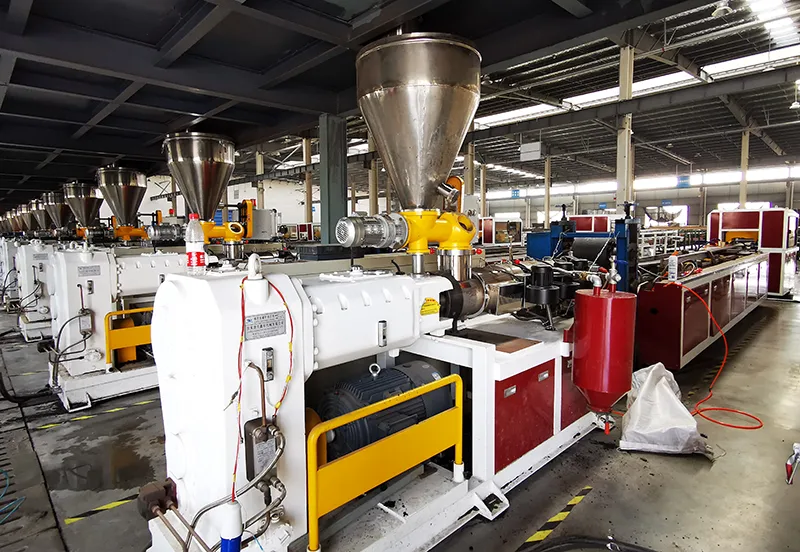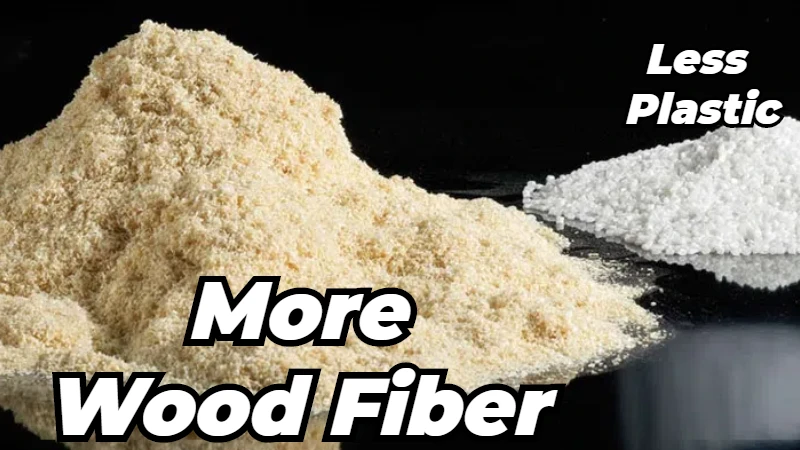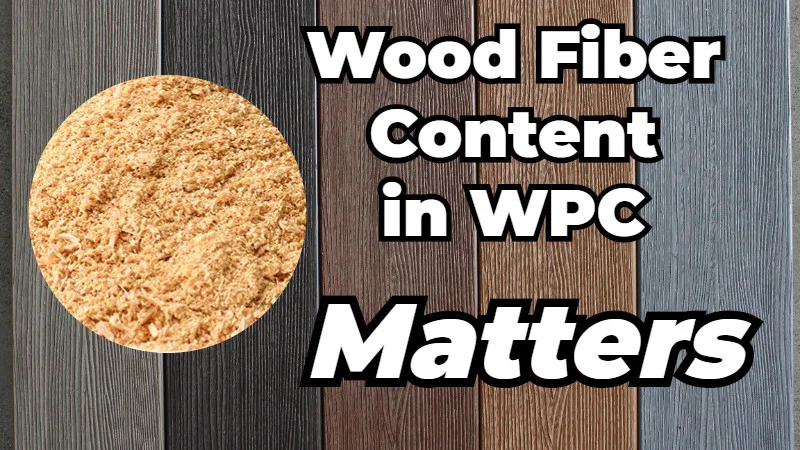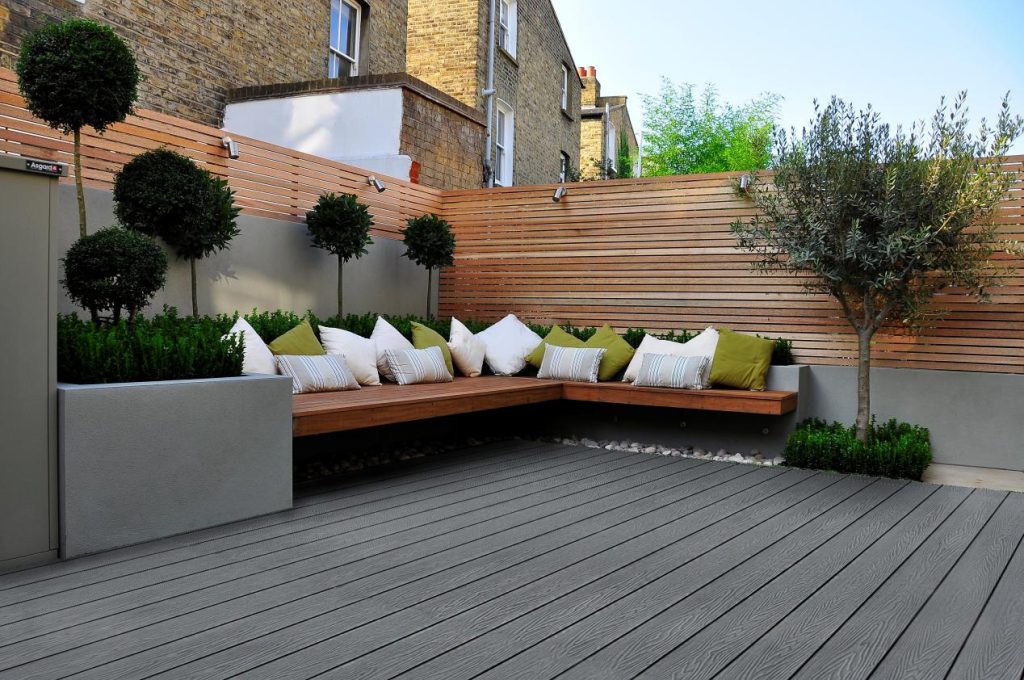In today’s environmentally conscious world, wood plastic composites (WPCs) have emerged as a sustainable alternative to wood across various industries. These composites, made from wood fibers and thermoplastic polymers, offer a promising solution for reducing environmental impact. By increasing the wpc wood fiber content, WPCs can be further optimized for enhanced durability and performance, making them more competitive in the market. However, achieving this goal is no simple task.
Benefits of Increasing WPC Wood Fiber Content
Currently, WPCs typically contain up to 70% wood fibers, with the remaining portion consisting of thermoplastic polymers. While this composition offers certain advantages, including renewability and cost-effectiveness, it also poses challenges such as reduced rigidity, susceptibility to creep, and significant thermal expansion coefficients. These limitations, especially evident in applications requiring high dimensional stability like outdoor decking and wall panels, highlight the need for further optimization.
To fully realize the potential of wood plastic composites (WPCs), researchers have been exploring ways to maximize the wood fiber content in these materials. Increasing the wood fiber content in WPCs presents a viable solution to enhance their properties and competitiveness in the market. By doing so, numerous benefits can be achieved such as cost reduction, improved environmental friendliness, and expanded applications in diverse industries.
Challenges and Problems to Increase WPC Wood Fiber Content
The critical value of wood fiber content in WPCs depends largely on the processing method employed. Currently, injection molding, thermo-compression molding, and extrusion molding are the three major processing methods in the WPC industry. However, injection molding necessitates high fluidity and higher operating temperatures and pressure than the other two methods, limiting the achievable wood fiber content to not exceeding 60%. On the other hand, thermo-compression molding offers the potential to surpass this threshold, with reported wood fiber contents exceeding 84%. However, challenges such as poor mixing and orientation often result in compromised mechanical properties and durability, and it is more difficult to achieve continuous production.

However, it is very difficult to further increase the wood fiber content of extruded wood plastic composite. This is mainly limited by the excessively high viscosity of the WPC melt under the condition of high wood fiber content, causing the WPC melt to flow unstably or even rupture during the extrusion process. Moreover, the limited polymer matrix is unable to completely coat the wood fibers, rendering the existing commonly used processes and equipment incapable of continuously and stably producing wood plastic composite with high wood fiber content. Additionally, there is still a lack of knowledge about the solid-like rheological behavior of wood plastic composite melts with high wood fiber content. This deficiency in systematic rheological theory is also one of the important reasons limiting the development of wood plastic composite with high wood fiber content.
Newest Studies on Increasing WPC Wood Fiber Content
But luckily, wood fibers have the potential to bond together to form a stable structure through interactions such as ionic bonding, hydrogen bonding, van der Waals forces, and physical entanglement. Therefore, selecting suitable polymer matrices and additives and controlling the processing techniques can theoretically further increase the content of wood fibers in WPC products. In order to sufficiently reduce the cost, increase environmental friendliness, and obtain a good wood texture, some researchers have conducted studies to produce polypropylene-based wood-plastic composites with high wood fiber content (UH-WPC) by extrusion molding using poplar and moso bamboo fibers as raw materials.
Researchers conducted a study to understand how changes in the polypropylene matrix affected mechanical properties, temperature creep, thermal expansion, dimensional stability, and water absorption of ultra-high wood fiber content wood-plastic composites (UH-WPC). They found that increasing the wood fiber content from 75% to 90% led to a significant decrease in thermal expansion, while creep strain decreased gradually, reaching its peak at 90%. Tensile and flexural modulus initially increased with filler volume but decreased at 90%, while tensile strength, flexural strength, and impact strength decreased as filler volume increased. At -30°C, UH-WPC exhibited higher tensile and flexural properties, whereas at 60°C, impact properties were superior.
Changes in temperature, humidity, and moisture content caused dimensional changes in UH-WPC, with the thickness direction being the most affected, followed by width and length directions, indicating clear anisotropy. Humidity had a greater impact on dimensional stability than temperature. Poplar-based UH-WPC performed better than moso bamboo-based UH-WPC due to its larger aspect ratio and superior interfacial bonding. This study provides insights into reducing production costs and expanding the applications of UH-WPC.








